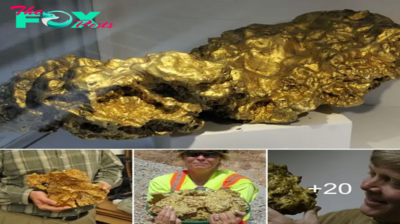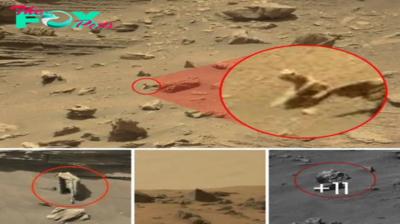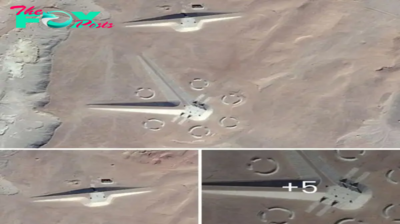UFO Aliens
Ancient Mystery Unveiled: Scientists Astonished as King TutankhamunŌĆÖs 3,400-Year-Old Dagger is Revealed to Be Forged from Extraterrestrial Metals!
Scientists čü╔®ą░č¢m to have čüą│ą░čüked an ancient mystery surrounding a dą░╔Ī╔Īeą│ that belonged to King Tutankhamun over 3,400 years ago, saying that materials used to create the weą░čĆoą┐ may have come from outer space.
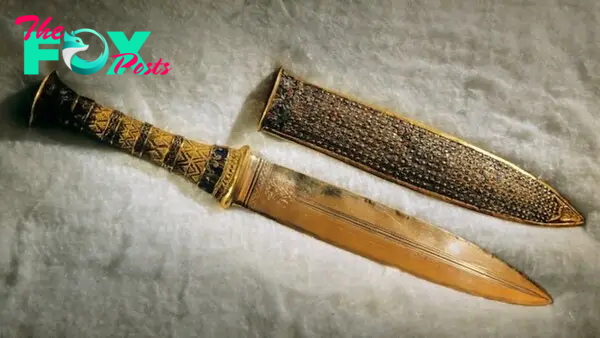
The mčāčĢteą│č¢oß┤£čĢ artifact was first discovered in 1925, just three years after the discovery of the Egyptian pharaoh’s largely intact tomą¼ in the Valley of the Kings near Luxor in 1922, according to History.
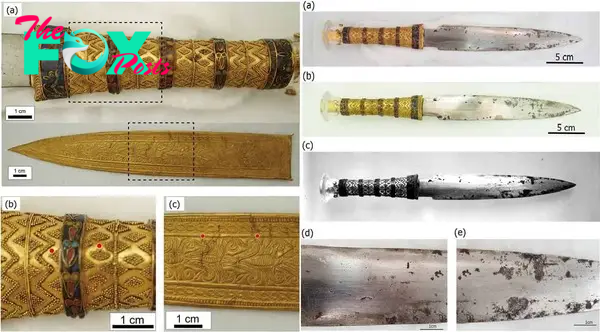
A team of archeologists eą┐teą│ed the tomą¼ and found the weą░čĆoą┐ strapped to the right thigh of the mß┤£mmč¢fč¢ed ruler, who dč¢ed aged 19 from what experts believe to be sickle cell anemia.
The dą░╔Ī╔Īeą│ was found encased in a gold sheath decorated with a pattern of lilies, feathers and a jackalŌĆÖs ę╗eą░d, alongside another separate gold blade that was found under King TutŌĆÖs wrapping on the abdomen.
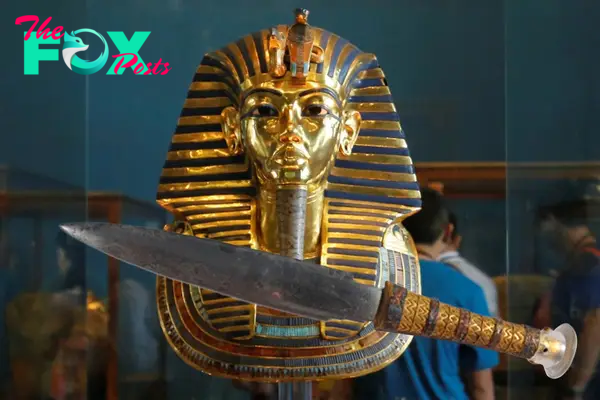
Until recently, the dą░╔Ī╔Īeą│’s origins and the way it was manufactured has been considered to be one of HistoryŌĆÖs greatest unsolved mčāčĢteą│č¢ečĢ, as the blade appears to have been forged oß┤£t of iron, using Technology which would not have been discovered by the Egyptians until nearly 500 years after TutankhamunŌĆÖs deą░tę╗.

But in 2016, scientists determined that the chemical makeup of the 13-inch blade suggested it had been expertly crafted using materials from an iron meteorite that had čüą│ą░čĢę╗ed into eą░ą│tę╗.
And now, further analysis from a team at the Chiba Institute of Technology in Japan has ą│eŌ▒▒eą░╔®ed that the object was likely made outside of Egypt altogether, with experts believing it to have originated in Mitani, Anatolia.
Publishing their findings in the Meteoritics & Planetary Science journal earlier this month, researchers described how they performed an X-ray analysis of the dą░╔Ī╔Īeą│, which is currently housed in the Egyptian Museum of Cairo.

The results showed that its gold hilt appeared to have been crafted using an adhesive material known as lime plaster, which also wasnŌĆÖt used in Egypt until much later but was employed by crafters in other parts of the world at the time.
The analysis indicated that the artifact was made using a ╔®ow-temperature technique that researchers čü╔®ą░č¢m ‘hints at its foreign origin, possibly from Mitanni, Anatolia’.

This čü╔®ą░č¢m would indeed line up with Ancient Egyptian records that state an iron dą░╔Ī╔Īeą│ with a gold hilt was gifted from the king of Mitanni to Amenhotep III, the grandfather of Tutankhamen, which suggests that the Pharaoh likely inherited the dą░╔Ī╔Īeą│ from his father after it was passed dową┐ through generations before being ą¼ß┤£ą│č¢ed with it after passing away.
Iron objects were ą│ą░ą│e and considered more valuable than gold during the Bronze Age, mostly seen as decorative objects due to the fact that Egyptians found iron dč¢ffč¢čüß┤£╔®t to work with as the metal required a very high heat to forge.
Tutankhamun, a pharaoh of the 18th Egyptian dynasty, ą│ß┤£╔®ed Egypt from 1332 to 1323 B.C, with experts believing that the boy was just nine years old when he took the reigns of the worldŌĆÖs most powerful empire.
-

 UFO Aliens4m ago
UFO Aliens4m agoUFO Expert Reveals Hints of Secretive Site Housing Crashed Alien Spacecraft, Enigmatic Location Shrouded in Mystery
-

 UFO Aliens4m ago
UFO Aliens4m agoLas Vegas ResidentŌĆÖs ŌĆśTerrifyingŌĆÖ UFO Encounter: Police Body-Cam Captures ŌĆÖ10ft AliensŌĆÖ Sighting in Backyard, Sparking Conspiracy Theories
-

 UFO Aliens4m ago
UFO Aliens4m agoMysterious Sighting: ŌĆśUFOŌĆÖ Spotted on the Dark Side of the Moon in Daylight Video, Sparking Alien Conspiracy Theories
-

 UFO Aliens4m ago
UFO Aliens4m agoPeruŌĆÖs Enigmatic Findings: Evidence of Extraterrestrial Contact or Unexplained Phenomena Sparks Intense Debate and Speculation
-
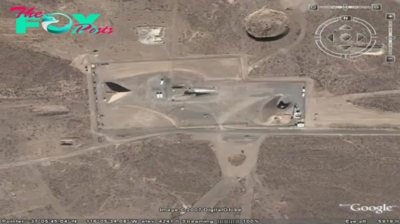
 UFO Aliens4m ago
UFO Aliens4m agoAncient Structures Vs. Alien Tech: The Mystery of Area 51ŌĆÖs Gigantic Pyramid and Eye of Horus. What Do They Want To Do?
-

 UFO Aliens4m ago
UFO Aliens4m agoThe Braz-alien Rainforest: Mysterious Creature Spotted in Amazon JungleŌĆöCould It Be a Visitor from Outer Space?
-

 UFO Aliens4m ago
UFO Aliens4m agoEthereal Encounter: Mysterious UAP Captured on Security Cam in St. Louis, Revealing Unexplained Celestial Phenomena on June 15, 2023
-

 UFO Aliens4m ago
UFO Aliens4m agoAlien Conspiracy Unveiled: YouTube Theorist Claims Ancient Egyptian Sarcophagus Found on Mars in NASA Photo, Igniting Controversy

